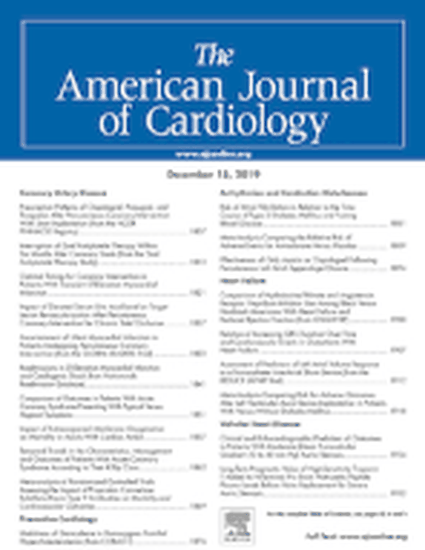
Article
Standard versus higher intensity anticoagulation for patients with mechanical aortic valve replacement and additional risk factors for thromboembolism
American Journal of Cardiology
(2021)
Abstract
Current guidelines recommend targeting an international normalized ratio (INR) of 2.5 to 3.5 for patients with mechanical aortic valve replacement (AVR) and additional risk factors for thromboembolic events. Available literature supporting the higher intensity (INR) goal is lacking. We aimed to evaluate the association of standard and higher intensity anticoagulation on outcomes in this patient population. The Michigan Anticoagulation Quality Improvement Initiative database was used to identify patients with mechanical AVR and at least one additional risk factor. Patients were classified into 2 groups based on INR goal: standard-intensity (INR goal 2.5) or higher-intensity (INR goal 3.0). Cox-proportional hazard model was used to calculate adjusted hazard ratios. One hundred and forty-six patients were identified of whom 110 (75.3%) received standard-intensity anticoagulation and 36 (24.7%) received higher intensity anticoagulation. Standard-intensity patients were older and more likely to be on aspirin. Atrial fibrillation was the most common additional risk factor for inclusion. The primary outcome of thromboembolic events, bleeding, or all-cause death was 13.9 and 19.5/100-person-years in the standard-intensity and higher intensity groups, respectively (adjusted HR 2.58, 95% confidence interval 1.28 to 5.18). Higher-intensity anticoagulation was significantly associated with any bleeding (adjusted HR 2.52, 95% confidence interval 1.27 to 5.00) and there were few thromboembolic events across both groups (5 events total). These results challenge current guideline recommendations for anticoagulation management of mechanical AVR in patients with additional risk factors.
Disciplines
Publication Date
November 15, 2021
DOI
10.1016/j.amjcard.2021.08.023
Citation Information
Hanigan S, Kong X, Haymart B, Kline-Rogers E, Kaatz S, Krol G, Shah V, Ali MA, Almany S, Kozlowski J, Froehlich J, Barnes G. Standard Versus Higher Intensity Anticoagulation for Patients With Mechanical Aortic Valve Replacement and Additional Risk Factors for Thromboembolism. Am J Cardiol. 2021 Nov 15;159:100-106. doi: 10.1016/j.amjcard.2021.08.023. PMID: 34656311.
